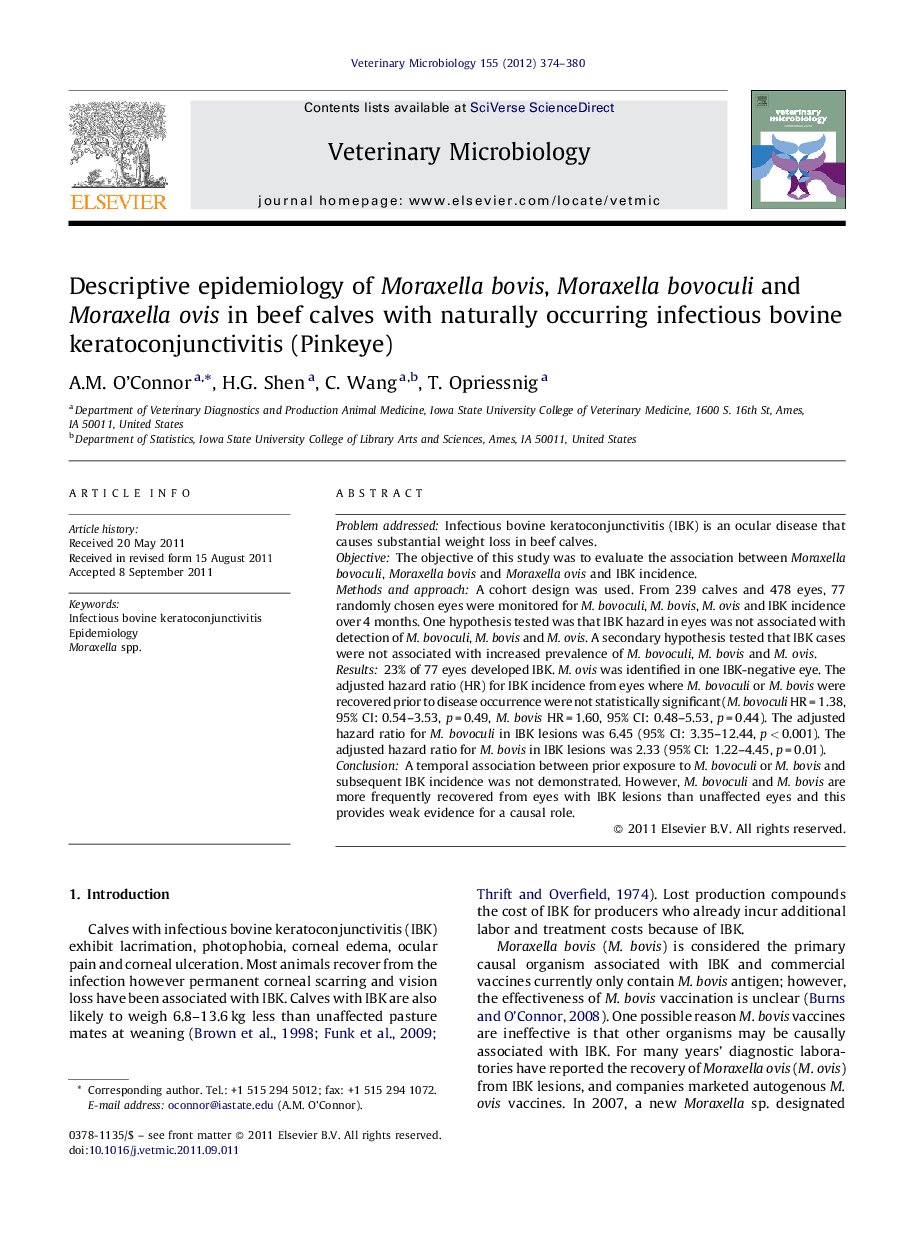| Article ID | Journal | Published Year | Pages | File Type |
|---|---|---|---|---|
| 2467462 | Veterinary Microbiology | 2012 | 7 Pages |
Problem addressedInfectious bovine keratoconjunctivitis (IBK) is an ocular disease that causes substantial weight loss in beef calves.ObjectiveThe objective of this study was to evaluate the association between Moraxella bovoculi, Moraxella bovis and Moraxella ovis and IBK incidence.Methods and approachA cohort design was used. From 239 calves and 478 eyes, 77 randomly chosen eyes were monitored for M. bovoculi, M. bovis, M. ovis and IBK incidence over 4 months. One hypothesis tested was that IBK hazard in eyes was not associated with detection of M. bovoculi, M. bovis and M. ovis. A secondary hypothesis tested that IBK cases were not associated with increased prevalence of M. bovoculi, M. bovis and M. ovis.Results23% of 77 eyes developed IBK. M. ovis was identified in one IBK-negative eye. The adjusted hazard ratio (HR) for IBK incidence from eyes where M. bovoculi or M. bovis were recovered prior to disease occurrence were not statistically significant (M. bovoculi HR = 1.38, 95% CI: 0.54–3.53, p = 0.49, M. bovis HR = 1.60, 95% CI: 0.48–5.53, p = 0.44). The adjusted hazard ratio for M. bovoculi in IBK lesions was 6.45 (95% CI: 3.35–12.44, p < 0.001). The adjusted hazard ratio for M. bovis in IBK lesions was 2.33 (95% CI: 1.22–4.45, p = 0.01).ConclusionA temporal association between prior exposure to M. bovoculi or M. bovis and subsequent IBK incidence was not demonstrated. However, M. bovoculi and M. bovis are more frequently recovered from eyes with IBK lesions than unaffected eyes and this provides weak evidence for a causal role.
